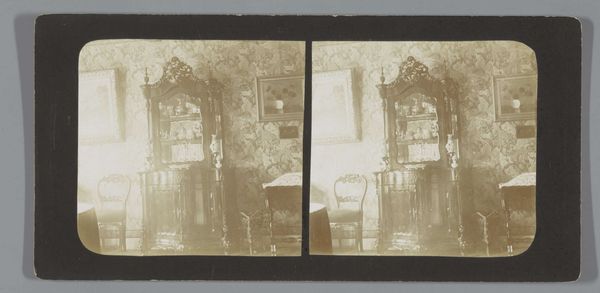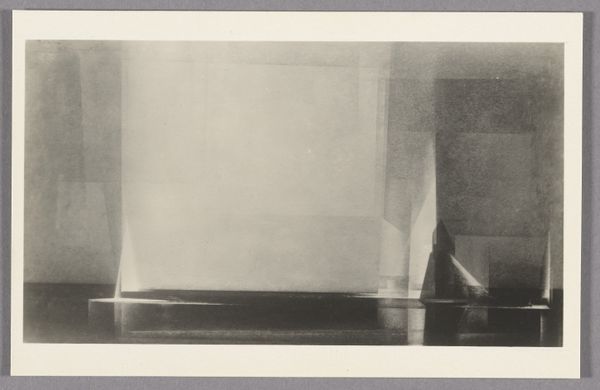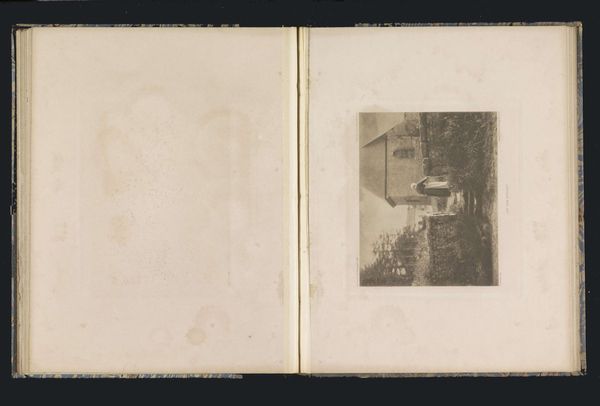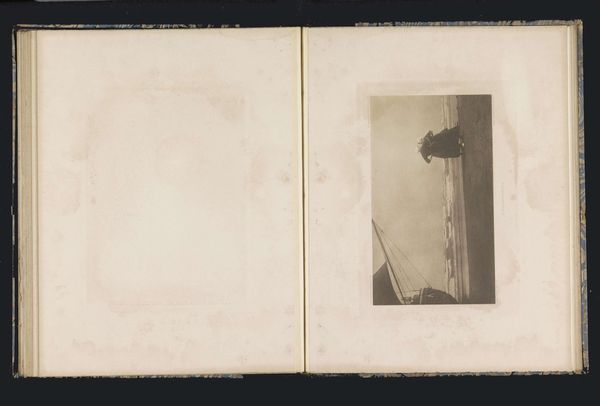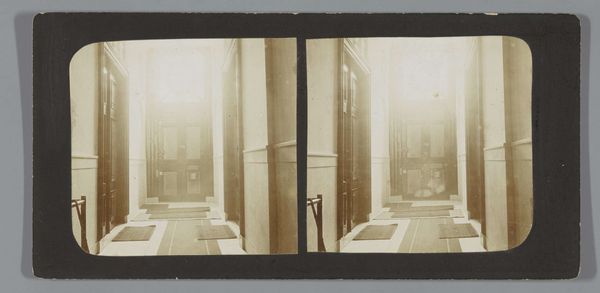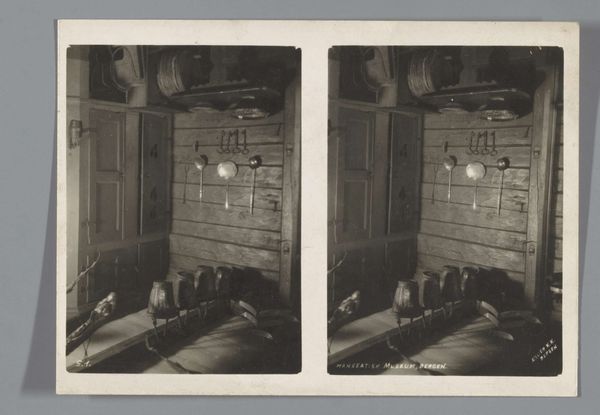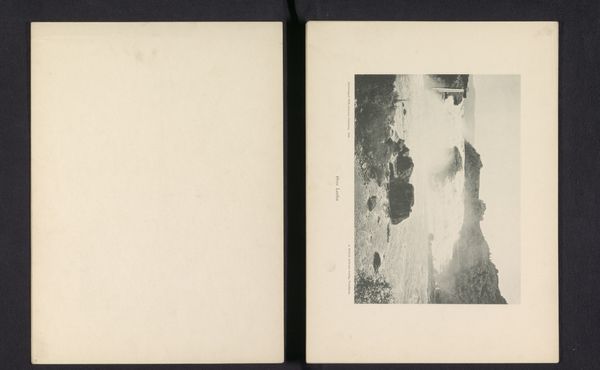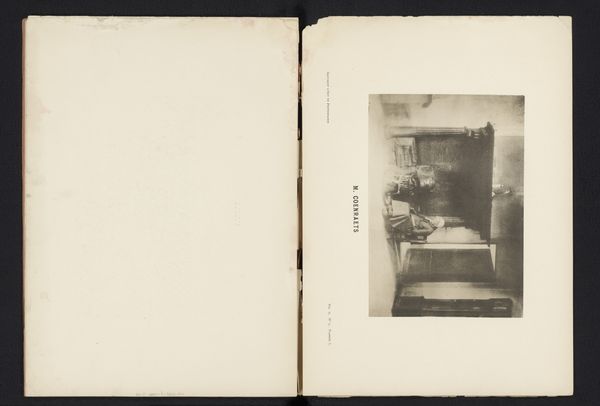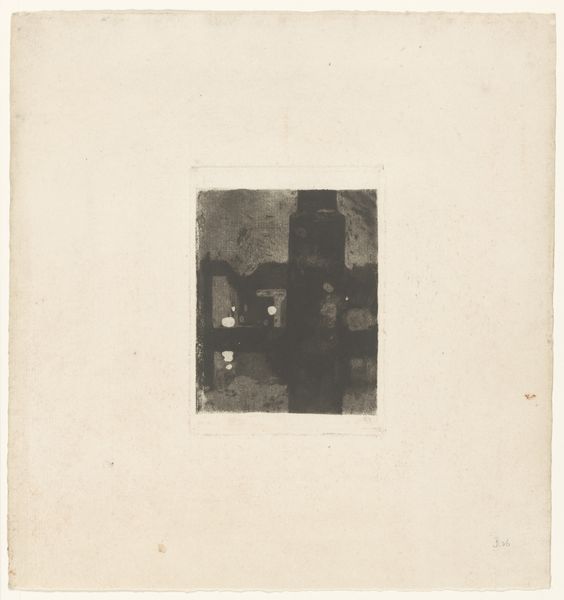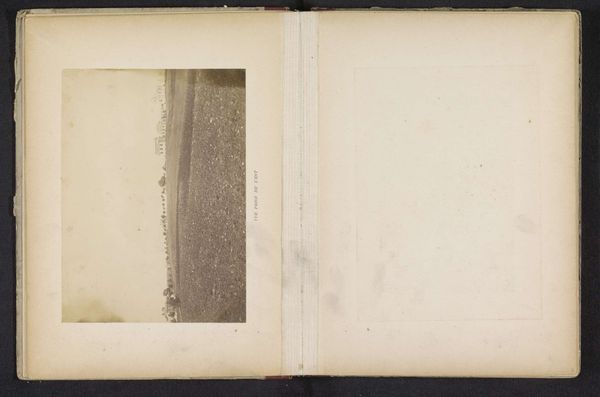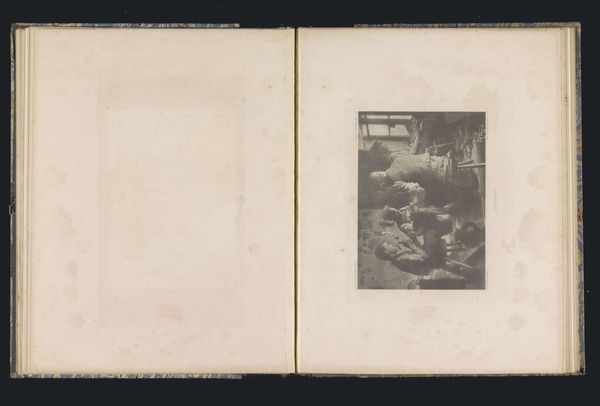
Vrouw aan een koffietafel in de achterkamer van Singel 256, Amsterdam, Nederland 1899
0:00
0:00
photography
#
portrait
#
dutch-golden-age
#
photography
#
genre-painting
Dimensions: height 88 mm, width 180 mm
Copyright: Rijks Museum: Open Domain
Curator: Adrianus Scheltema-Beduin captured this scene in 1899 with "Vrouw aan een koffietafel in de achterkamer van Singel 256, Amsterdam, Nederland." Editor: The first impression I get is a sense of quiet domesticity—a stillness that feels almost haunting due to the photography's warm sepia tone. Curator: It's a genre painting frozen in time. We have to remember this was a period of immense social change, but such images offered a curated ideal of feminine life. Editor: You're right; the setting amplifies this sensation, all these subtle symbols—the ornate curtains, the china, the position of the woman at her coffee, it’s staged performance within bourgeois life. I'm thinking particularly about how the objects reflect that sense of prosperity and quiet confidence. Curator: Exactly, the table isn’t just a table. It is symbolic of wealth, yet at the same time, it tells a subtle story about gender roles during the Dutch Golden Age and their continuation well into the 19th century. She is defined by the private sphere. Editor: And within that carefully crafted sphere, is there room for agency? Or is she simply a passive object, beautifully framed within her domestic tableau? The weight and arrangement of all these objects... What might those layered symbols have signaled to its original audience? It definitely deserves a closer consideration. Curator: Yes, viewing it through an intersectional lens opens up further avenues. Where does this idealized portrayal meet the reality of women’s experiences at the turn of the century? We can deconstruct the notion of “genre painting” itself. What is included or omitted from this narrative and why? Editor: The light filtering in makes me ponder cycles: of life, of the day, and the cyclical nature of visual tropes within domestic scenes—reminding me that objects and their placement are a language of cultural memory. Curator: Absolutely, this photography offers a valuable starting point for further exploration of social expectations, power dynamics, and even the subtle acts of resistance or self-expression that might have occurred within such spaces. Editor: What an incredible scene! A simple picture transforms to a deeper investigation into domestic codes. Curator: It does indeed, it highlights the layers of meaning embedded within this photograph!
Comments
No comments
Be the first to comment and join the conversation on the ultimate creative platform.
